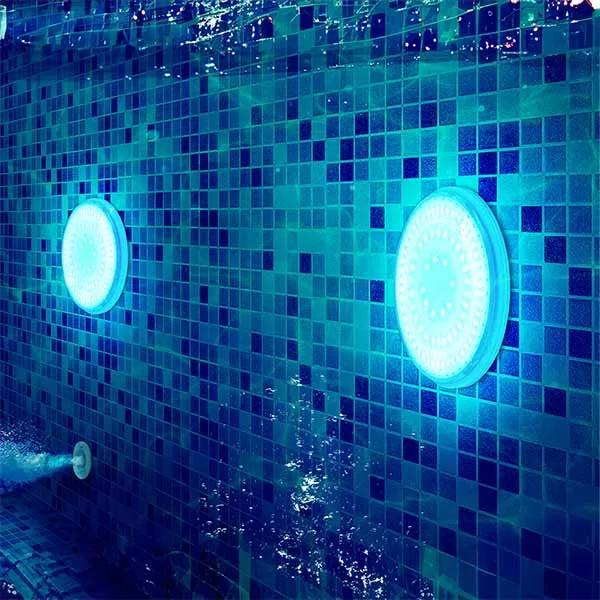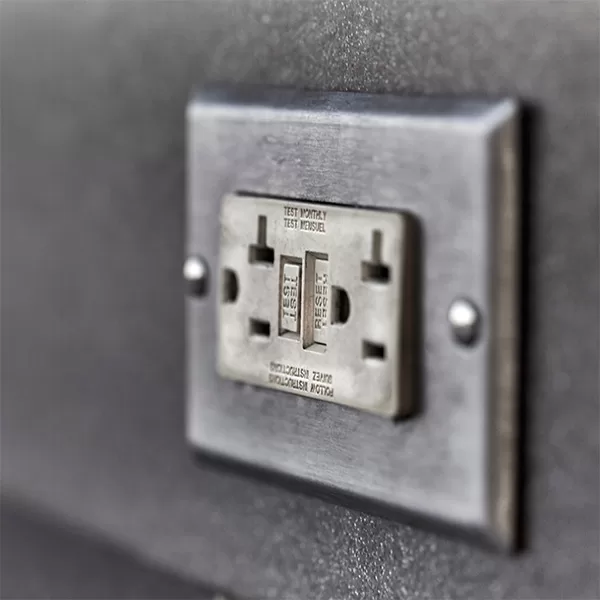FREE Standard Shipping On All Orders $100 or More!*

Inground Pool Electrical Safety
The CPSC has reported 14 deaths from electrocution in swimming pools during 2003-2014. The cause can be faulty pool light wiring, improper bonding or grounding of equipment, failed Ground Fault Circuit Interrupters (GFCI), or dropping power tools in the pool.
Let's take a look at each of these possibilities, and if something seems amiss in your pool electrical safety, have a certified electrician check it out. Many electrical hazards around the pool are often created by over-zealous homeowners and pool service techs; call an electrician.
Inground Pool Electrical Safety: Underwater Pool Lights
Pool lights are naturally seen as the most obvious risk area for pool electrocution, being a light that's underwater. When Calder Sloan, a 7 yr old Florida boy, was fatally shocked by a pool light in 2014, there was a great debate over whether 120V pool lights should be banned. But the Sloan pool had low voltage, 12V lighting, which can also be unsafe when mis-wired, and when GFCI's fail to interrupt the circuit.

The light cord wires run in conduit (pipe) from the back of the light niche, to the junction box where the wires connect to the wires coming from the GFCI breaker. The junction box should be 18" above the water level, to keep pool water out. Both ground wires from the light and breaker are connected together and pig-tailed to a green ground screw inside the J-box.
An electrician should ground the light niche, to protect against any stray voltage. Inside the wet niche there is a grounding lug that must have a bare copper wire connected to it, normally this a continuous ground around the entire pool. An electrical potting compound is put over the grounding connection, the termination encapsulated in a wet niche potting compound. This helps protect the connection from the possible deterioration from water and chemicals.
Underwater pool lights eventually fail. After about 30 years, the cord casing and lamp housing begin to corrode. Older lights or modified pool lights often lead to hazardous situations. Never make repairs to the pool light cord, or splice an underwater light cord. There are no pool light parts available for the cord or housing, only bulbs, gaskets, lenses and clamp assemblies. Always use the correct replacement bulb, and replace with a new lens gasket.
If you are concerned about your pool light safety, call an electrician to come have a look. A few hundred dollars spent is a cheap insurance policy against pool electrical accidents.
Inground Pool Electrical Safety: Bonding & Grounding

Bonding and grounding are often misunderstood terms, but essentially, grounding is running a green ground wire from the breaker panel, to the green ground screw on the electrical load, such as a pump, pool light, spa blower, electrical outlet or pool heater. All of the ground wires go back to the breaker panel and attach to the ground, which is connected to a buried grounding rod.
Bonding on the other hand, is a continuous loop of bare #8 copper wire, that connects all of the metal equipment and components of the pool. Your pump motor, heater, blower, lights, and also your pool ladders, diving board or slide, steel in the pool shell and in the pool deck.
Bonding lugs are used to connect the continuous bare wire to the pool walls (1), the plumbing (2), pump, heater, skimmer, ladders and handrails (3), and the mesh steel in the deck (4). Image by Burndy.com, maker of specialized bonding lugs for the industry.
Inground Pool Electrical Safety: Ground Fault Circuit Interrupters

The pool light must be installed on a GFCI circuit. That means that the wires coming to the pool light J-box must come from a GFCI breaker. These are often easy to spot by the yellow Test button, and are usually 20 amp breakers.
Often the same circuit is used to power a GFCI electrical outlet underneath the pool sub panel. The outlet serves as secondary protection to the breaker, both will trip if they sense a voltage variance, or voltage going to ground.
Both GFI breakers and outlets can, and will eventually fail. I recommend having an electrician replace GFCI breakers and outlets used on a pool - every 30 years. You should also test them regularly, by pushing the Test button, to be sure it quickly interrupts the circuit.
Power in the Pool
Sadly, a few electrical accidents around pools are not the result of faulty pool electrical wiring, but from radios, power drills, hair dryers or other electrical items, plugged in and dropped into the pool. Rechargeable tools and radios are the safer alternative. If an appliance is dropped into the pool, a GFCI outlet should shut off the power in 1/4 second, but if not, unplug the power cord first! Do not dive in after your expensive device, or attempt to pull someone who is being shocked to safety, unplug the cord or shut off the power.
You should know where and how to shut off power to the pool. Most inground pools have a 100 amp sub-panel installed by the pool pump and filter. This is a small breaker box with a flip-up lid. The large breakers are for pumps and blowers, smaller breakers are for lights and outlets. Flipping the circuit breakers to the off position will shut everything off, but power is still being supplied to the breaker box, from a large 100 amp breaker installed in the main house panel.
Be alert for other electrical hazards around the pool, like overhead power lines, which can be contacted with a metal pool pole. Missing protective panels or covers on time clocks and breaker boxes can also be hazardous. Cracked and broken wire conduit powering pumps, lights and heaters can cause wire casings to split, exposing live wires.
Be careful around your pool, and call an electrician if anything looks fishy!